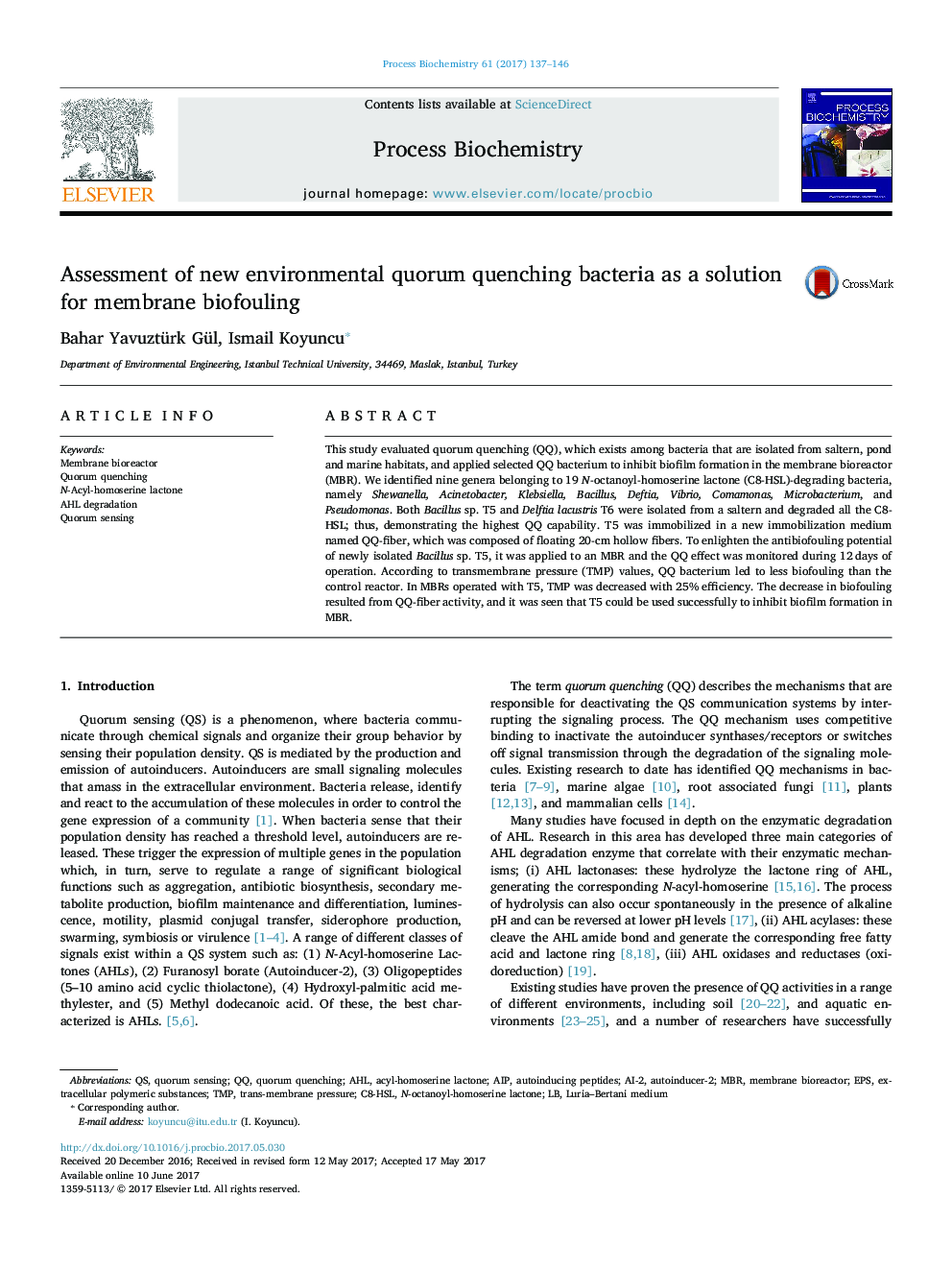| Article ID | Journal | Published Year | Pages | File Type |
|---|---|---|---|---|
| 6452923 | Process Biochemistry | 2017 | 10 Pages |
â¢19 new QQ bacteria were isolated from environmental samples.â¢T5 and T6 completely degraded 200 nM AHL within 30 and 60 s in aqueous solution.â¢QQ fiber was developed as a new immobilization medium.â¢TMP values of control and QQ MBR showed that QQ-fiber with T5 is an effective biofouling control agent with 25% efficiency.
This study evaluated quorum quenching (QQ), which exists among bacteria that are isolated from saltern, pond and marine habitats, and applied selected QQ bacterium to inhibit biofilm formation in the membrane bioreactor (MBR). We identified nine genera belonging to 19 N-octanoyl-homoserine lactone (C8-HSL)-degrading bacteria, namely Shewanella, Acinetobacter, Klebsiella, Bacillus, Deftia, Vibrio, Comamonas, Microbacterium, and Pseudomonas. Both Bacillus sp. T5 and Delftia lacustris T6 were isolated from a saltern and degraded all the C8-HSL; thus, demonstrating the highest QQ capability. T5 was immobilized in a new immobilization medium named QQ-fiber, which was composed of floating 20-cm hollow fibers. To enlighten the antibiofouling potential of newly isolated Bacillus sp. T5, it was applied to an MBR and the QQ effect was monitored during 12Â days of operation. According to transmembrane pressure (TMP) values, QQ bacterium led to less biofouling than the control reactor. In MBRs operated with T5, TMP was decreased with 25% efficiency. The decrease in biofouling resulted from QQ-fiber activity, and it was seen that T5 could be used successfully to inhibit biofilm formation in MBR.
Graphical abstractDownload high-res image (100KB)Download full-size image
